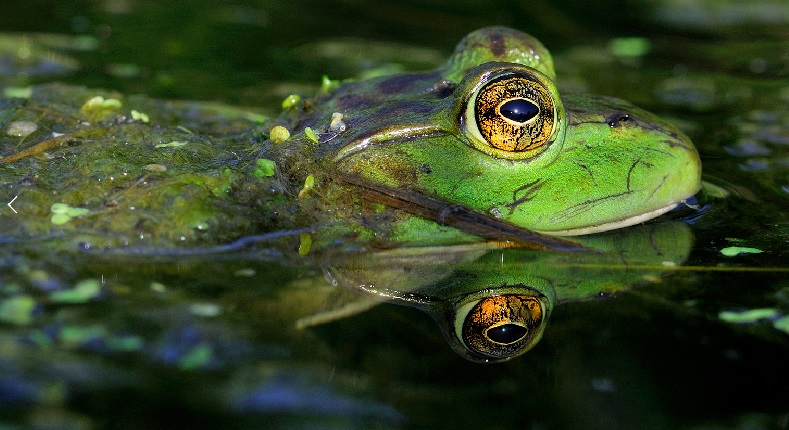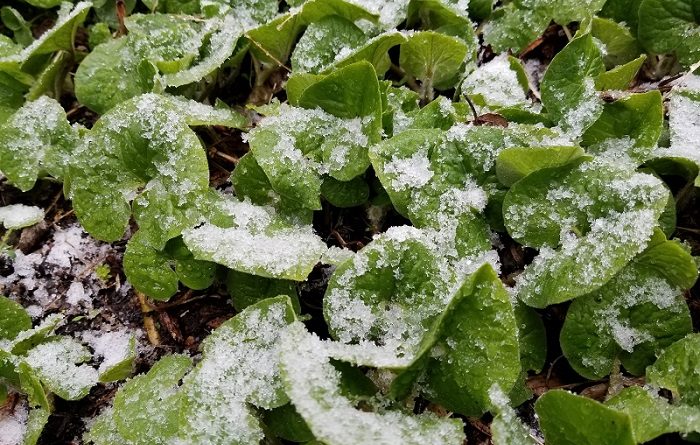Wild Ginger Slushies in April
Podcast: Play in new window | Download (Duration: 1:43:52 — 47.7MB)
Subscribe: Apple Podcasts | Spotify | Android | iHeartRadio | Podchaser | Email | TuneIn | RSS | More
(April 28, 2019) By the way, you probably don’t want to have wild ginger slushies anytime. Though the fresh or dried roots were apparently used by early Americans as a ginger substitute, this Wikipedia entry states that the plant contains carcinogen aristolochic acid. Oddly, that fact is not mentioned on many other sites. Perhaps that’s my first question for Melinda Myers, who returns to the show today.
 It’s always a treat to have Melinda on the program, mainly because I get to relax. Heck, she’s already in the Hall of Fame of GWA: The Association for Garden Communicators. That, by the way, is the highest honor that can be given to a member of the association. So I know that all I have to do is ask a halfway smart question and she’ll do the rest. I can’t believe we haven’t talked to her since November 11 of last year.
It’s always a treat to have Melinda on the program, mainly because I get to relax. Heck, she’s already in the Hall of Fame of GWA: The Association for Garden Communicators. That, by the way, is the highest honor that can be given to a member of the association. So I know that all I have to do is ask a halfway smart question and she’ll do the rest. I can’t believe we haven’t talked to her since November 11 of last year.
What I didn’t expect, when I asked her to be on this show, is that we were going to have a snowstorm on April 27. That’s where the heading and accompanying photo come in. I ran out to the yard this afternoon to find a shot that would represent this weather anomaly, and my wild ginger (Asarum canadense) seemed to fill the bill.
So I know that we’re going to start with questions about snowstorms at the end of April, and what that means for your plants. We’ll move on from there to other spring growing topics. Perhaps those will include jump starting the season with cloches, row covers or containers that can be moved in or out. We might also discuss solarizing the soil for weed control and warming it right after a snow storm.
By the way, I would be remiss if I didn’t remind you that Melinda hosts the nationally-syndicated Melinda’s Garden Moment program, airing on more than 120 TV and radio stations throughout the United States. She also hosts the internationally distributed Great Courses “How to Grow Anything” DVD series, including the latest Food Gardening for Everyone DVD set.
She’s a longtime columnist and contributing editor for Birds & Blooms magazine and writes the twice monthly “Gardeners’ Questions” newspaper column. Myers writes a regular column for Chicagoland Gardening and Wisconsin Gardening magazines, and she has written more than 20 gardening books, including Can’t Miss Small Space Gardening and the Midwest Gardener’s Handbook.
Restoring Chicago’s wetlands
Welcome to the 21st century, when we’re restoring Chicago’s wetlands. In the 19th century, Chicagoans were doing everything they could to destroy those wetlands, or swamps, as they were known. In fact, Chicago was built on a swamp. The fact that Chicago has any wetlands at all is a miracle, considering how industry has abused the land for more than a hundred years.
Yet, they survive, and some are quite remarkable. Even more remarkable are the people who work tirelessly to bring these natural areas to some semblance of their former glory. I wouldn’t know much about Chicago’s southeast side at all if it weren’t for folks like Tom Shepherd, Arthur Melville Pearson and others like the folks who are on today’s show.

That brings us to a partnership known as the Calumet Wetland Working Group. Some of the partners are The Wetlands Initiative, Audubon Great Lakes, the Chicago Park District, the Field Museum and The Nature Conservancy. They are working on a rapid assessment of 20 remnant wetland sites in the Calumet region. Part of the goal is re-establish hemi-marsh wetland type that’s crucial to supporting many wetland-dependent bird species.
One of those sites is a place called Indian Ridge Marsh,
a 165-acre site along the Calumet River that was once home to a large colony of state-endangered Black-crowned Night-Herons. The site is owned by the City of Chicago, and the Chicago Park District has a long-term lease on the land and will be managing it. The U.S. Army Corps of Engineers recently completed a five-year effort to restore native vegetation here for people and wildlife, but certain work items are still needed to bring back the site’s ecological character.
But it’s hard to find advocates for places that exist only on a map. Which is why there are activities scheduled all year long for Indian Ridge Marsh. They are called Community Stewardship Days, are here are just a few.
- Beginner-friendly birding on May 25 to scope out scaups, sandpipers, and stilts along the shores of a hemi-marsh restoration-in-progress (with its own iNaturalist hotspot), followed by some hands-on fun planting native sedges that will help increase bird habitat.
- A sunset walk on July 26 through a burgeoning oak savanna with TWI’s Trevor Edmonson, stopping along the way to identify members of a cryptic clade: moths!
- A celebratory hunt on August 4 for the botanical Bigfoot of Chicago—a minuscule mushroom-dependent flower known as Thismia americana—followed by lunch, games, and storytelling by local luminaries.
Wait. You don’t know about Thismia americana? Hubboy. Check it out here, here and here. If, once you’ve read about it, you’re not ready to crawl on your hands and knees through the muck in the hope of making a name for yourself in the annals of science, I don’t know what’s wrong with you.
Paul Botts, President & Executive Director of The Wetlands Initiative, and Teri Valenzuela, Stewardship Program Associate at Audubon Great Lakes, join us in studio today.

